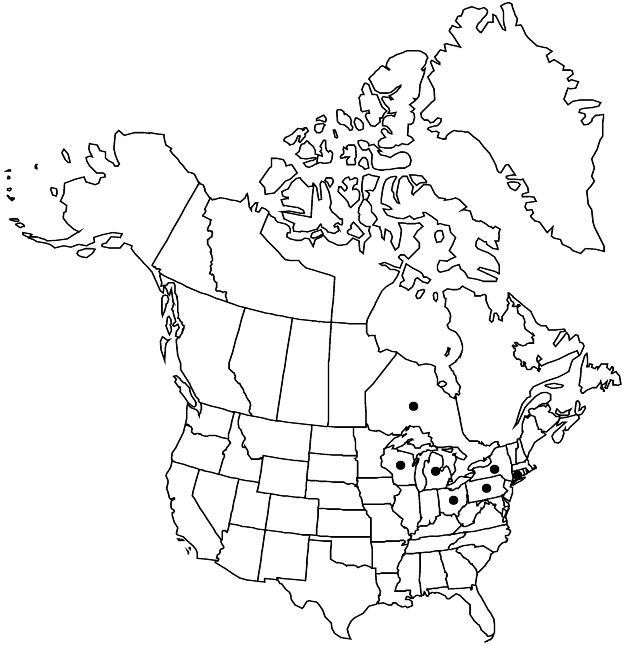Difference between revisions of "Crataegus jesupii"
Rhodora 5: 61. 1903.
FNA>Volume Importer |
FNA>Volume Importer |
||
| Line 63: | Line 63: | ||
|publication year=1903 | |publication year=1903 | ||
|special status=Conservation concern;Endemic | |special status=Conservation concern;Endemic | ||
| − | |source xml=https://jpend@bitbucket.org/aafc-mbb/fna-data-curation.git/src/ | + | |source xml=https://jpend@bitbucket.org/aafc-mbb/fna-data-curation.git/src/f6b125a955440c0872999024f038d74684f65921/coarse_grained_fna_xml/V9/V9_971.xml |
|subfamily=Rosaceae subfam. Amygdaloideae | |subfamily=Rosaceae subfam. Amygdaloideae | ||
|tribe=Rosaceae tribe Gillenieae | |tribe=Rosaceae tribe Gillenieae | ||
Revision as of 20:39, 24 September 2019
Shrubs or trees, 70 dm. Stems: twigs: new growth reddish, glabrous, 1-year old dark brown, often strongly pruinose, 2-years old blackish, older dark gray, becoming paler later; thorns on twigs recurved to ± straight, 2-years old blackish, ± slender, 3–5 cm. Leaves: petiole 2–4 cm, glabrous, glandular; blade sometimes ± blue-green mature, trullate-ovate, 4–7 cm, thin but firm, base ± broadly cuneate, lobes 3 or 4 per side, sinuses deep, angled, lobe apex often ± aligned, acuminate, margins serrate, proximal teeth gland-tipped, veins 4 or 5 per side, apex acute, abaxial surface glabrous, adaxial short-pubescent young, soon glabrescent. Inflorescences 4–8-flowered; branches glabrous; bracteoles few, margins glandular. Flowers 15–18 mm diam.; hypanthium glabrous; sepals ± triangular, 4–6 mm, margins entire or glandular-serrate; stamens 10 (20), anthers pink or rose; styles 4. Pomes red, pyriform-oblong, 8–10 mm diam., slightly pruinose; sepals spreading; pyrenes 3–5, dorsally grooved.
Phenology: Flowering May; fruiting Sep–Oct.
Habitat: Borders of woods, thickets
Elevation: 20–300 m
Distribution

Ont., Conn., Mich., N.Y., Ohio, Pa., Wis.
Discussion
Of conservation concern.
Crataegus jesupii ranges from Wisconsin to Connecticut, Ohio, and Pennsylvania.
In Michigan, Crataegus jesupii is notable for its stipitate-glandular bracteoles. Forms with wider leaves, about as wide as long, are represented by C. filipes. An otherwise identical Ontario specimen has 20 stamens and would key out to C. beata.
Selected References
None.